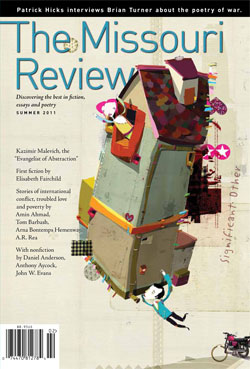Nonfiction | July 17, 2011
Cruising through the Necropolis
Daniel Anderson
This text is not currently available online.
As a tenth-grade biology student in suburban Cincinnati, Ohio, I was required to assemble a leaf collection. Aside from the catalpa, gingko, oak, maple and maybe buckeye, I can’t recall any of the other specimens that I ironed between two sheets of wax paper, identified by kingdom, phylum, class, order, family, genus and species, then handed over in an awkward three-ring binder with embarrassing sloppiness and bare-minimum ambition, to our teacher, Mr. Matthews. I squirm today to think of how my dunderheaded, adolescent indifference then was an insult to whatever Adam first named the hickory and the larch, the locust, the hornbeam and the leatherwood, and to all those later poets who tuned the language of the flora even further, with names like frosty lacebark elm, Warren’s red possumhaw, mountain silverbell, common rose mallow, weeping purple European beech, prariefire crabapple and sparkleberry winter holly.
If you are a student, faculty member, or staff member at an institution whose library subscribes to Project Muse, you can read this piece and the full archives of the Missouri Review for free. Check this list to see if your library is a Project Muse subscriber.
Want to read more?
Subscribe TodaySEE THE ISSUE
SUGGESTED CONTENT

Editors' Prize Winner
Apr 16 2024
How to Love Animals
How To Love Animals We never planned to get goats. In fact, we’d told ourselves that goats were off limits. My wife, Anna, and I were living in the middle… read more

Nonfiction
Apr 16 2024
My Cape Disappointment
My Cape Disappointment It was named by a British fur trader who’d been looking for the mouth of the Columbia River. Dejected, the fur trader gave up the search, tacked… read more

Nonfiction
Apr 16 2024
The Birds
The Birds In the middle of watching Alfred Hitchcock’s The Birds with my family in our basement TV room, circa 1969, when I was nine, I was sent to the… read more

